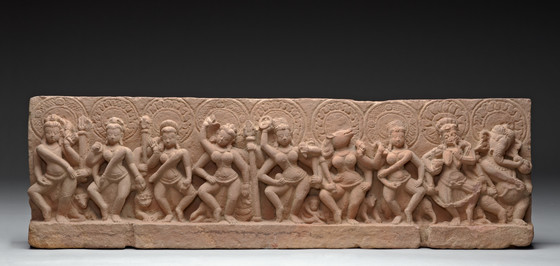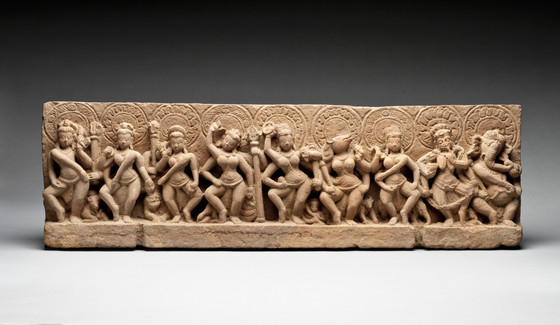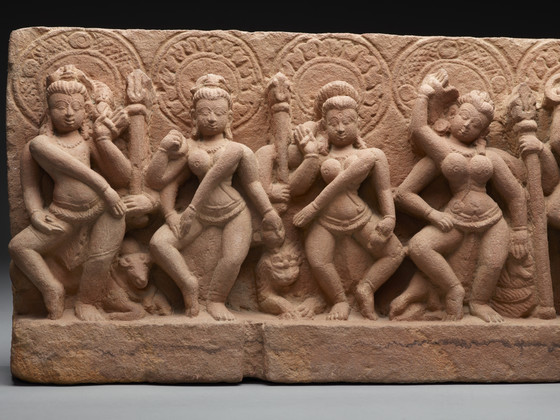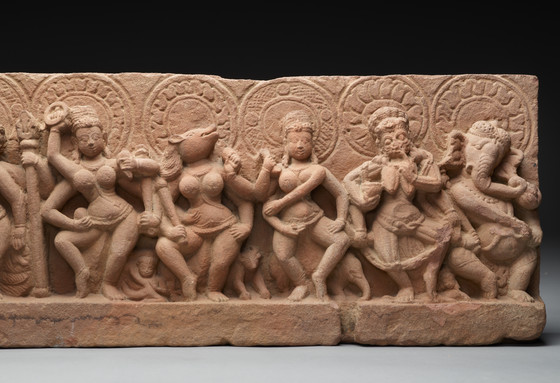The Seven Mother Goddesses (Sapta Matrikas) Flanked by Shiva-Virabhadra and Ganesha, Lord of Obstacles




Please log in to add this item to your gallery.
View comments
No comments have been posted yet.
Add a comment
Please log in to add comments.
Please log in to add tags.
* Nearly 20,000 images of artworks the museum believes to be in the public domain are available to download on this site.
Other images may be protected by copyright and other intellectual property rights.
By using any of these images you agree to LACMA's Terms of Use.
The Seven Mother Goddesses (Sapta Matrikas) Flanked by Shiva-Virabhadra and Ganesha, Lord of Obstacles
India, Madhya Pradesh, 9th century
Sculpture
Red sandstone
10 1/2 x 35 1/4 x 5 in. (26.67 x 89.53 x 12.7 cm)
Gift of Paul F. Walter (M.80.157)
Not currently on public view


